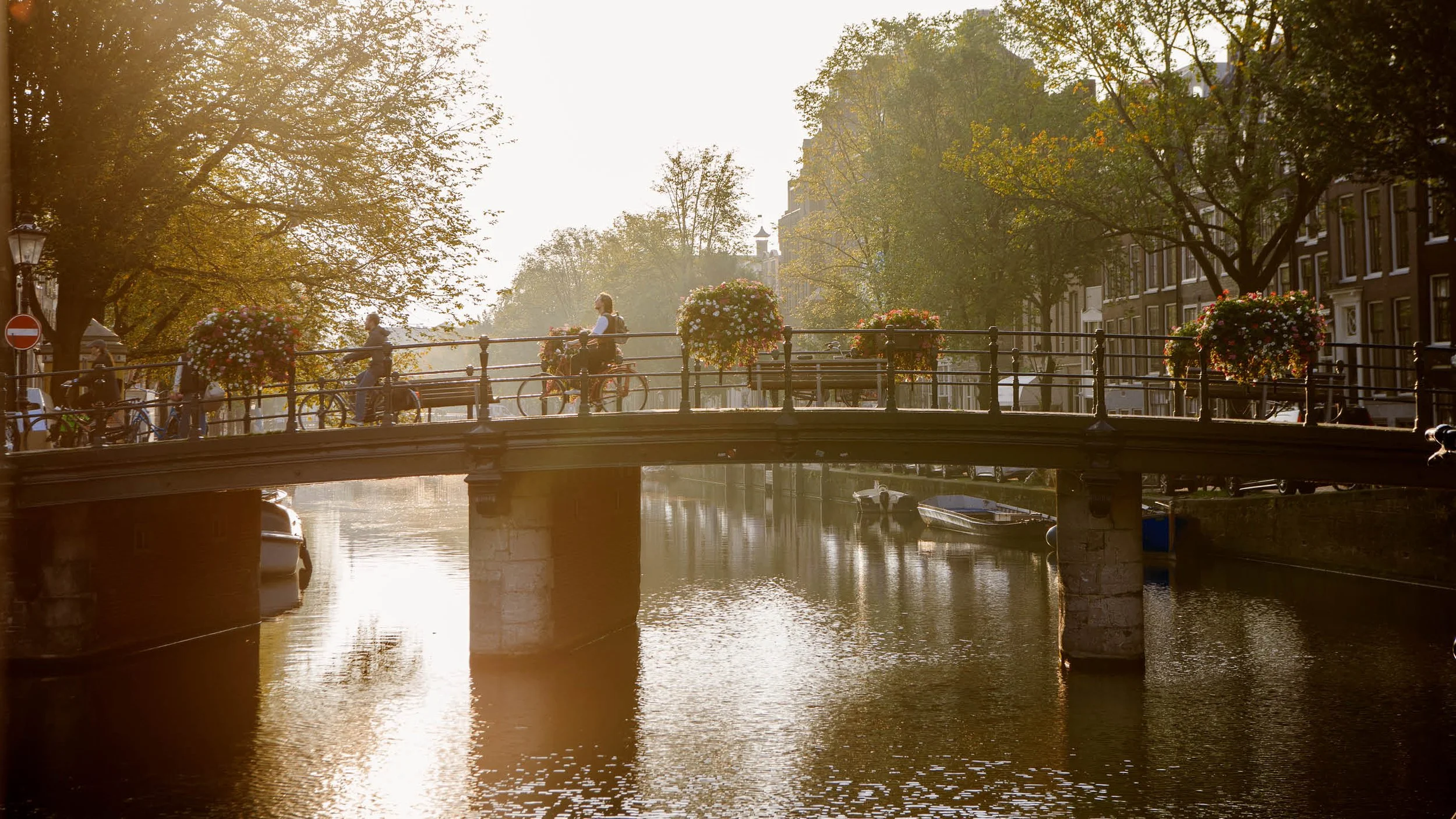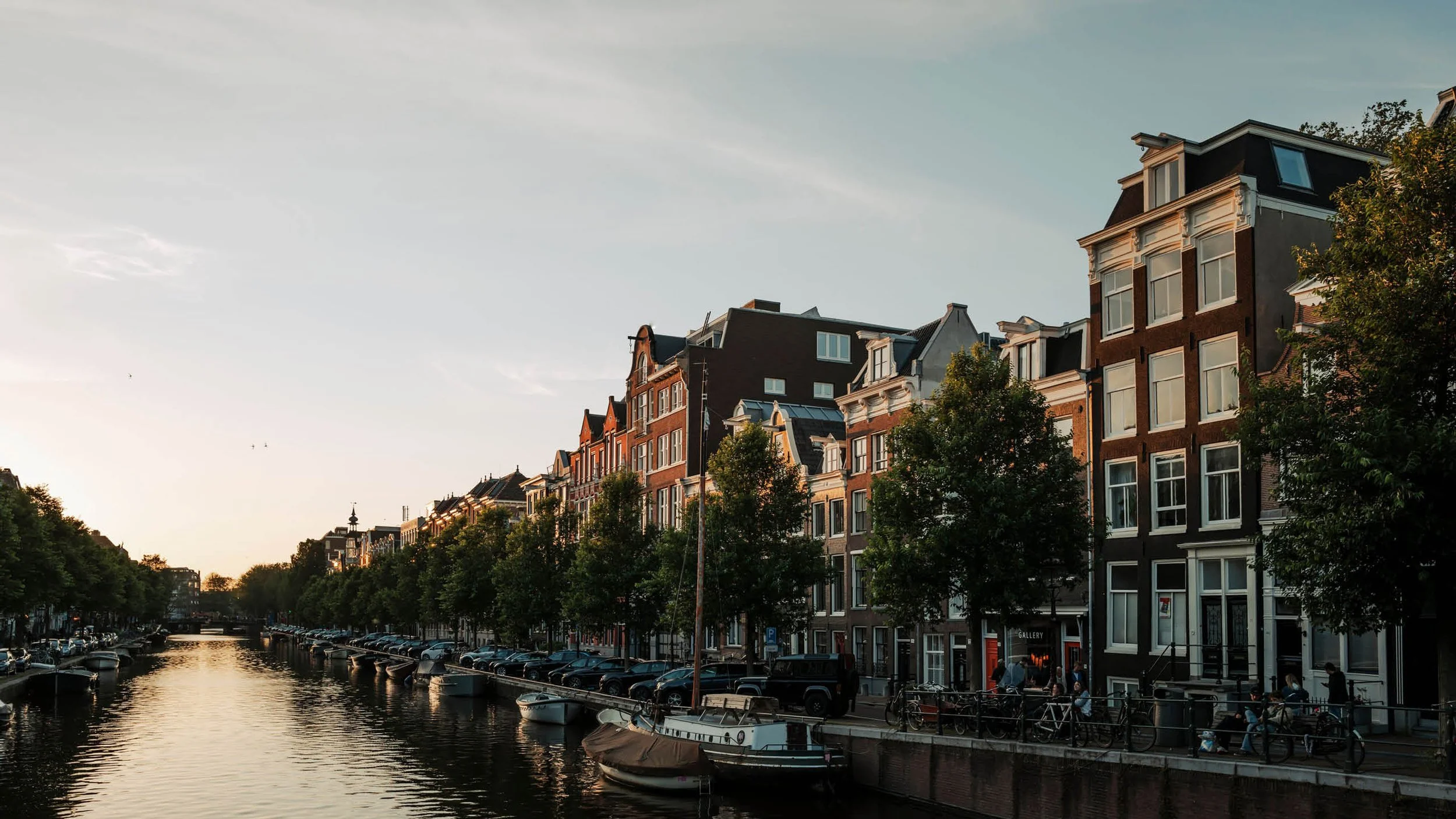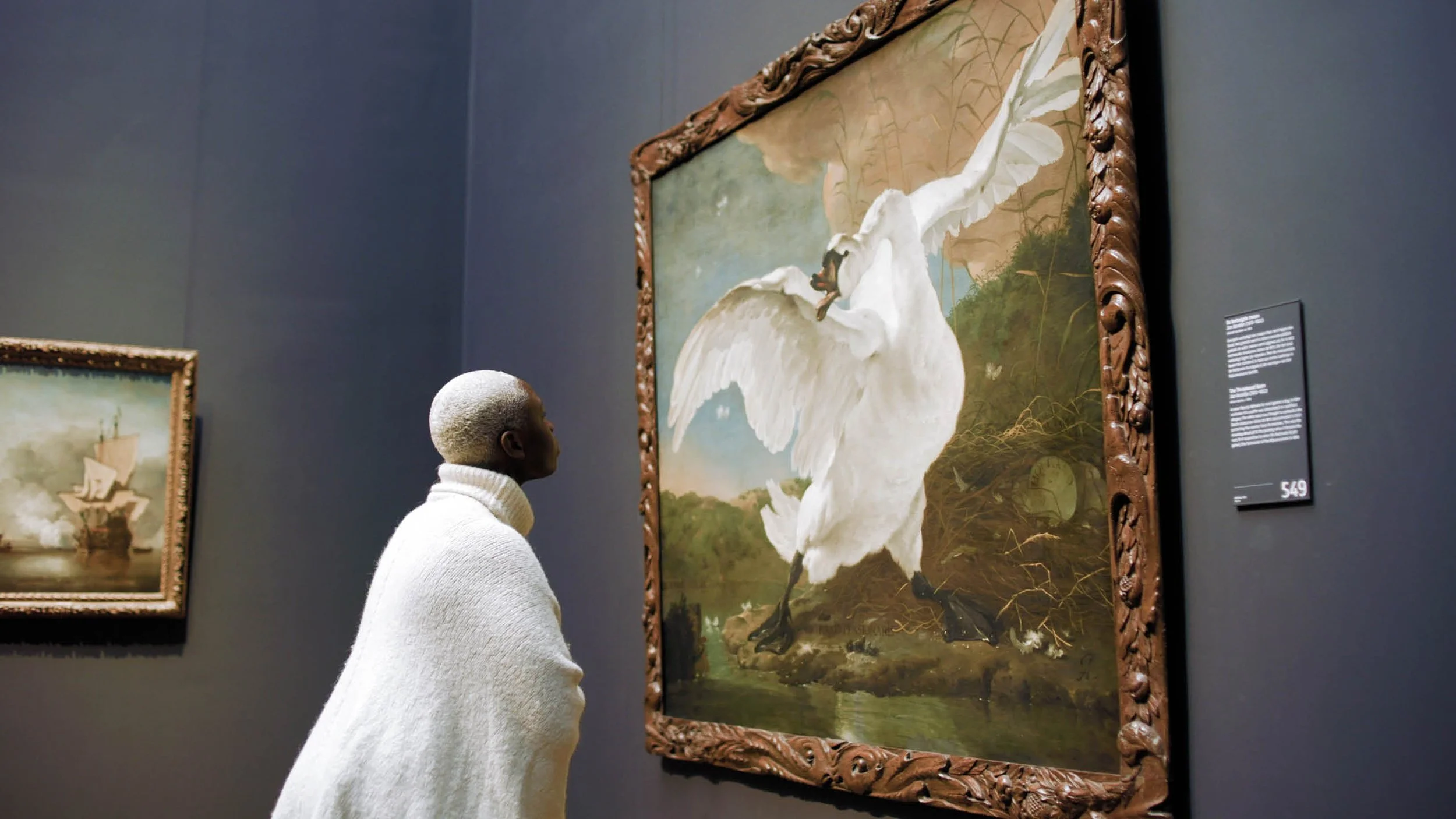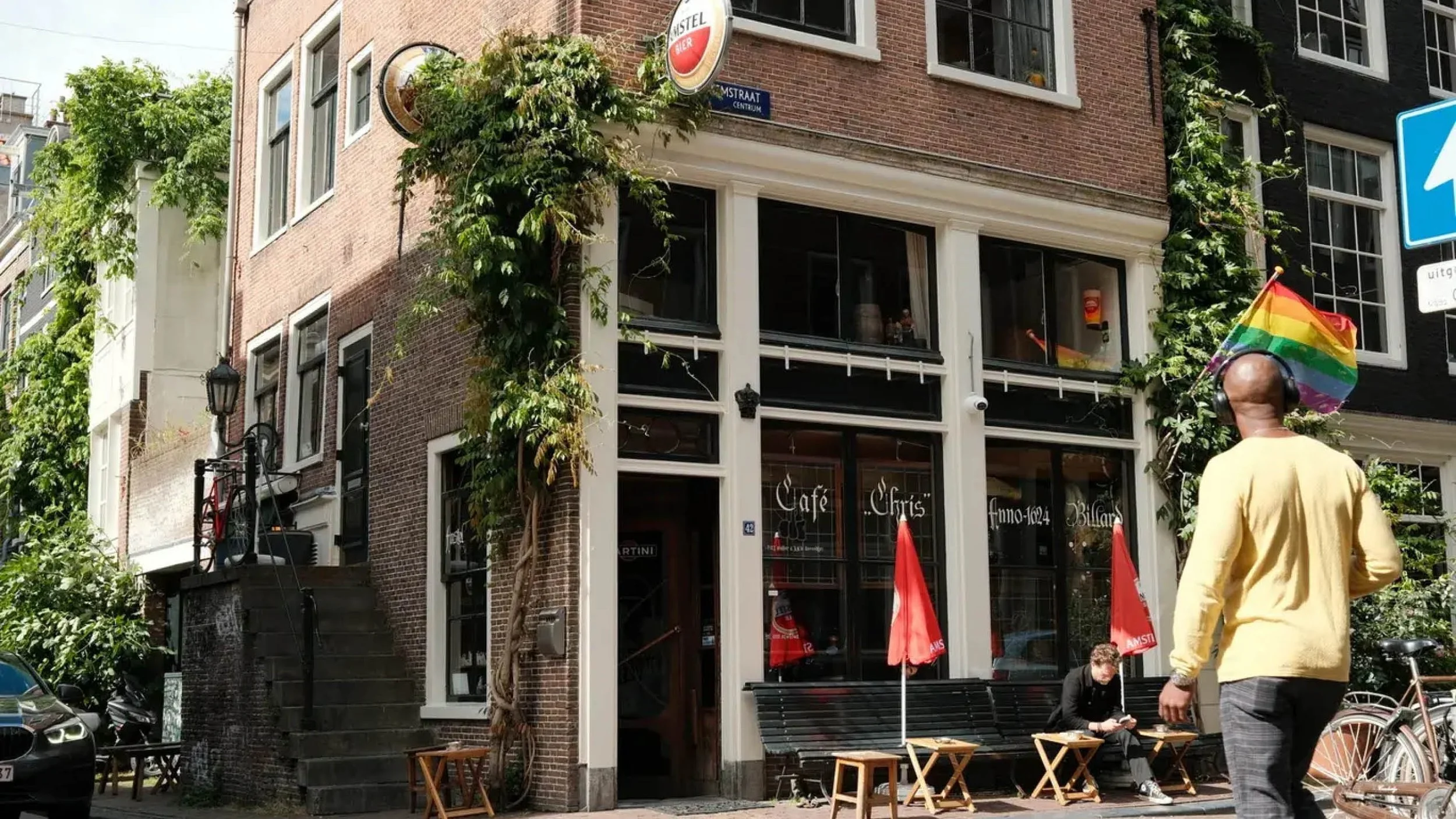Golf City Guide #8 Amsterdam
A city of canals, culture and quiet charm, Amsterdam’s appeal lies in its balance – historic yet modern, relaxed yet creative, and always full of character. From Michelin-starred dining to private canal cruises, we speak to local travel experts Jeroen van Ark and Nick Blok on how to make the most of the Dutch capital.
Why visit Amsterdam?
“I think everyone has the romantic version of Amsterdam in their minds – the beautiful canals lined with trees, quaint bridges, gabled houses, bikes everywhere and beautiful flowers. That’s the feeling that everyone is after if they visit Amsterdam, they want to walk out of their hotel and straight onto the canals, and that is absolutely what you will find when you visit."
Where should I stay?
“Amsterdam is a small city, it’s very easy to see a lot of the highlights just by walking around and exploring, so staying near the city centre is best. The best place to stay is either in or near the Jordaan district, a very nice local district with beautiful houses, restaurants and boutique shops and restaurants.
“The Rosewood Amsterdam, which opened this year after a decade-long restoration to the city’s former Palace of Justice, is one of the best in the city. It’s a grand hotel found in the heart of the Canal district, filled with art and boasts a deep history behind it."
What is the best way to experience the canals?
“Amsterdam is beautiful from the water, so a canal trip is a must, but make sure you go on the right boat – a small, private boat, especially with a guide, is always a success, because it can be tailored to your needs and wants.
“Another cool thing, if you’re a bit adventurous, you can also hire your own electric boat. You don’t need any certificates or licences, and you can be your own captain and enjoy a picnic on the water. Those boats go up to eight people, and it’s an activity you will never forget.”
What are the must-see museums in Amsterdam?
“Amsterdam is obviously world famous for its museums, and there’s so many to visit. Rijksmuseum is probably the most iconic, you can spend a whole day there, but the one area you can’t miss is the second floor, the Gallery of Honour, where all the masterpieces are. You can spend up to an hour just in this one gallery, and you will see some of the greatest paintings of the 17th and 18th centuries.
“For something less formal and more creative, STRAAT Museum, in Amsterdam North, it’s all about street art and graffiti. It has pieces that are 20 metres wide, five metres high, with very passionate guides – you can even do a graffiti workshop there.”
What else can I do in the city?
“Go shopping in De Negen Straatjes (Nine Streets) in the Jordaan district. It’s where you find all the local designer boutiques – the biggest shop there in terms of brand is Carhartt, but otherwise all the other shops are small local brands. The best thing about this part of town, the Amsterdam that you see in photos is what you will see here.
“A day trip out of Amsterdam is also very doable. You can travel in the morning to the likes of Rotterdam – it’s about an hour and fifteen minutes in the car – enjoy a late morning tour or activity, do a nice lunch, enjoy something in the afternoon then head back to Amsterdam.
“Rotterdam is very famous for its harbour [the largest seaport in Europe], and one of the best things to do is a trip on a RIB – you can hop on one of the boats or hire them out exclusively, and it’s one for the adrenaline junkies. But there are lots of other interesting places too, such as the Market Hall, where you can do lots of tastings, and there’s the cube houses, the famous weird-shaped buildings that people live in.”
Where should I eat?
“We have 23 Michelin-rated restaurants in Amsterdam, and the best is Restaurant de Kas, located in what is essentially a giant 1920s greenhouse. They grow their own produce – their vegetables are the main character of the plate, with meat and fish to complement – and a six-course menu is now 80 or 90 euros, which for a Michelin star restaurant is very decently priced, and in a beautiful venue. Everything is just well done but in a super casual way, they really understand their hospitality.
© Restaurant de Kas
“It’s a very multicultural city, and you see that in the restaurants. For example, in the Netherlands we have spectacular Indonesian food – it used to be a Dutch colony, so if you go to any typical Indonesian restaurant, you can order a ‘rijsttafel’, or a rice table, which includes dozens of small side dishes from sambal to satay to curries.
“For a quirky fine dining hidden gem, head to REM Eiland, an old North Sea platform that used to be a pirate radio station. It’s now been moved to Amsterdam and has some very experimental food.
“To sample all the flavours of Amsterdam, one of the best ways to do that is to join a city tour where you can enjoy culinary bites along the way. If you’re brave you can try raw herring, which we’re famous for, you can sip on a Jenever, the Dutch forefather to gin, and walk into a local cheese shop and try the different flavours.”
Where should I go for a drink?
“For us, the regular café on the street corner where we get our coffee during the day, in the evening you go there for your beers and sit down for a drink.
© Discover Amsterdam - Jordaan
“We have a couple of bar areas – Rembrandt Square (Rembrandtplein) is where you find a lot of typical bars, and hop into the place that suits you best. As a local, if you want to sit down for a drink and conversation, I recommend heading to De Pijp, or the Jordaan district.”
When is the best time of year to visit?
“In spring, it's always nice because you see a lot of flowers in the city, but it also can be very busy. In my opinion, autumn is best – the leaves are still on the trees, and there are less tourists, so early September would be a beautiful time to visit. Amsterdam is at its most vibrant when terraces are being used for people to sit outside, so just before summer too, around May and June is also a great time to visit.”





























